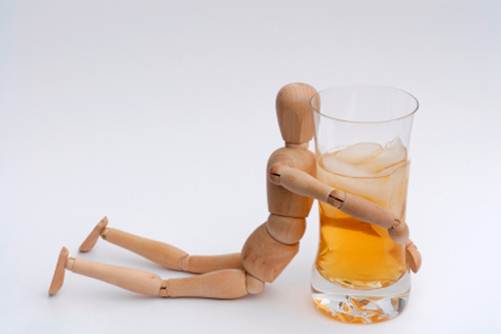
In previous blogs, I’ve discuss mindful management of cravings and talking out cravings. There are other ways to manage cravings when they arise. Here are just a few:
- When you get cravings, STOP, PAUSE, BREATHE, and THINK through the consequences of using. What will happen? How will you feel?
- Make a gratitude list. Carry it in your wallet or purse. When you get a craving, pull out your gratitude list and reflect on what you will lose if you act on your cravings.
- Go to in-person recovery meetings, such as Smart Recovery, 12-step recovery meetings, LifeRing, Secular Organization for Sobriety, Women for Sobriety, Refuge Recovery, or church-based recovery programs such as Celebrate Recovery.
- Go online to meetings and forums, such as those at www.smartrecovery.comorg or www.intherooms.com.
- See a therapist once or twice a week. Attend a substance abuse treatment group.
- Exercise.
- Pray or meditate twice a day or more.
- Journal. Write when you get a craving about how you will feel after you use and how it will impact others, and how you will feel if you don’t use. Write about triggers or underlying feelings that are causing your cravings to arise.
- Attend religious/spiritual/inspirational meetings.
- Practice yoga, Tai Chi, or Qigong.
- Go for long walks.
- Read spiritual/inspirational/recovery literature, watch recovery videos, or listen to podcasts on recovery.
- Engage in productive activities. Ask yourself, “What is the next best thing for me to do right now?” It may be getting the house cleaned, finishing a project for work, or catching up with friends. Substitute craving with a feeling of accomplishment.
- Volunteer.
- Give to someone.
- Make a “Consequences Card.” On one side list the benefits of abstaining. On the other side list the consequences of addicting. Laminate it. Carry it with you and review it whenever you get a craving. Also note the consequences of your addiction on those you love and who love you.
- Sit with your cravings. This requires practicing meditation and mindfulness. If you have developed these abilities, you can engage in “Urge surfing”—watch your cravings like clouds in the sky of your awareness and wait for the cravings to pass. Center yourself in the still awareness that is your true self. From this place of mindful awareness, watch your thoughts and feelings as objects in your awareness. Don’t’ allow yourself to get caught up in them. Let your Awareness unhook you from urges to use. Remind yourself not to believe everything you think, especially negative thoughts.
- Envision the life you want to live. Imagine how acting on your cravings will/will not help you achieve your life vision.
- Label cravings as just cravings and do not give yourself a choice. Remind yourself that every time you do not act on a craving you strengthen your recovery. Label the craving as the “feeling of healing.” Imagine how good you will feel when the craving has passed without addicting.
- Distance yourself from any triggers. Get out of any high-risk or dangerous situations. Keep away from high-risk people.
- Relax. Used deep breathing and muscle relaxation techniques.
- If you rationalize or justify using, go over your thinking with your recovery mentor, therapist, or a recovery contact. Work to get clarity on your “mis-thinking.”
- When a craving comes, remind yourself that “this too shall pass.” Comfort yourself with the thought that the craving won’t last forever.
- Practice thought stopping techniques. Say “stop” out loud, visualize a stop sign, or snap a rubber band on the wrist. Note the thought, and direct your attention back to the Present. Identify the next right thing to do. Then do it without hesitation. Substitute craving thoughts with positive thoughts and images, such as images of healing, your ideal self, a future goal, or images of love ones. Pull out photographs of loved ones. You can also substitute craving thoughts with reflections on your consequences card. Reflect on the positive consequences of not using.
- When cravings arise, “Don’t entertain the thought.” Don’t romance the addiction, thinking about the pleasure of addicting. This only seduces you into obsessing over “temporary gain” without seeing the much greater “long term pain.”
- Some people benefit from medications to reduce cravings. For some, cravings are too powerful and craving management skills are too weak to manage cravings without medications. There is nothing wrong with using medication to help manage cravings as long as you do not use the medication as a substitute for recovery work.
- Investigate the roots of the craving. What is threatening your well-being? What message might the craving be giving? Write in your journal to attain clarity, or explore it with a therapist or recovery support. Then address the pain with problem solving, perspective taking, or acceptance. If the problem, for example, is that you are lonely, pick up the phone or go to a meeting rather than numb it by addicting.
- Soothe yourself. Treat yourself to something pleasurable that will not harm you or others. It might be a snack, entertainment, reading a good book, exercising, taking a bath, or playing a game.
- Distract yourself. Busy yourself with reading, doing puzzles, knitting, playing a musical instrument, making models, learning to do something new, taking a course, playing video games (assuming you do not have a tech addiction), going for a walk, listening to music, going to a movie, going dancing, going bowling, going to a sport event, making love, or doing research for a future project or event such as a vacation.
Pick 4-6 techniques from this list to practice over the next month. Add these to your practice of mindfulness and of talking out cravings. Experiment. As in all aspects of recovery, put your willingness to manage your cravings into action. It is willingness in action that leads to growth.
Image Source: https://mom.girlstalkinsmack.com/family/solve-your-cravings.aspx
